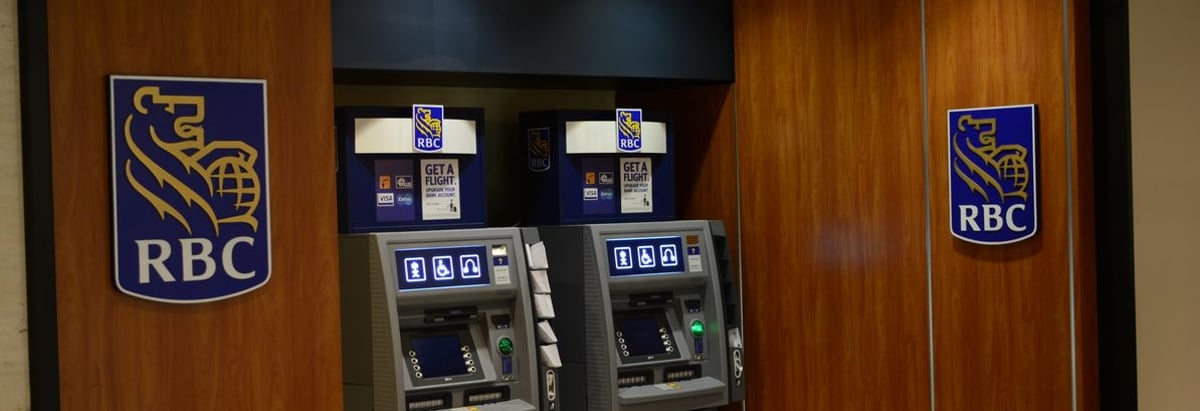Stock Analysis
Institutions own 47% of Royal Bank of Canada (TSE:RY) shares but individual investors control 53% of the company

Key Insights
- Significant control over Royal Bank of Canada by individual investors implies that the general public has more power to influence management and governance-related decisions
- The top 25 shareholders own 35% of the company
- Institutions own 47% of Royal Bank of Canada
If you want to know who really controls Royal Bank of Canada (TSE:RY), then you'll have to look at the makeup of its share registry. We can see that individual investors own the lion's share in the company with 53% ownership. Put another way, the group faces the maximum upside potential (or downside risk).
Institutions, on the other hand, account for 47% of the company's stockholders. Insiders often own a large chunk of younger, smaller, companies while huge companies tend to have institutions as shareholders.
Let's delve deeper into each type of owner of Royal Bank of Canada, beginning with the chart below.
Check out our latest analysis for Royal Bank of Canada
What Does The Institutional Ownership Tell Us About Royal Bank of Canada?
Many institutions measure their performance against an index that approximates the local market. So they usually pay more attention to companies that are included in major indices.
We can see that Royal Bank of Canada does have institutional investors; and they hold a good portion of the company's stock. This can indicate that the company has a certain degree of credibility in the investment community. However, it is best to be wary of relying on the supposed validation that comes with institutional investors. They too, get it wrong sometimes. If multiple institutions change their view on a stock at the same time, you could see the share price drop fast. It's therefore worth looking at Royal Bank of Canada's earnings history below. Of course, the future is what really matters.
We note that hedge funds don't have a meaningful investment in Royal Bank of Canada. Our data shows that BMO Asset Management Corp. is the largest shareholder with 5.5% of shares outstanding. The Vanguard Group, Inc. is the second largest shareholder owning 3.7% of common stock, and RBC Global Asset Management Inc. holds about 2.6% of the company stock.
Our studies suggest that the top 25 shareholders collectively control less than half of the company's shares, meaning that the company's shares are widely disseminated and there is no dominant shareholder.
While studying institutional ownership for a company can add value to your research, it is also a good practice to research analyst recommendations to get a deeper understand of a stock's expected performance. Quite a few analysts cover the stock, so you could look into forecast growth quite easily.
Insider Ownership Of Royal Bank of Canada
The definition of an insider can differ slightly between different countries, but members of the board of directors always count. Company management run the business, but the CEO will answer to the board, even if he or she is a member of it.
Most consider insider ownership a positive because it can indicate the board is well aligned with other shareholders. However, on some occasions too much power is concentrated within this group.
Our information suggests that Royal Bank of Canada insiders own under 1% of the company. It is a very large company, so it would be surprising to see insiders own a large proportion of the company. Though their holding amounts to less than 1%, we can see that board members collectively own CA$19m worth of shares (at current prices). Arguably recent buying and selling is just as important to consider. You can click here to see if insiders have been buying or selling.
General Public Ownership
The general public -- including retail investors -- own 53% of Royal Bank of Canada. This level of ownership gives investors from the wider public some power to sway key policy decisions such as board composition, executive compensation, and the dividend payout ratio.
Next Steps:
It's always worth thinking about the different groups who own shares in a company. But to understand Royal Bank of Canada better, we need to consider many other factors.
I like to dive deeper into how a company has performed in the past. You can access this interactive graph of past earnings, revenue and cash flow, for free.
Ultimately the future is most important. You can access this free report on analyst forecasts for the company.
NB: Figures in this article are calculated using data from the last twelve months, which refer to the 12-month period ending on the last date of the month the financial statement is dated. This may not be consistent with full year annual report figures.
New: AI Stock Screener & Alerts
Our new AI Stock Screener scans the market every day to uncover opportunities.
• Dividend Powerhouses (3%+ Yield)
• Undervalued Small Caps with Insider Buying
• High growth Tech and AI Companies
Or build your own from over 50 metrics.
Have feedback on this article? Concerned about the content? Get in touch with us directly. Alternatively, email editorial-team (at) simplywallst.com.
This article by Simply Wall St is general in nature. We provide commentary based on historical data and analyst forecasts only using an unbiased methodology and our articles are not intended to be financial advice. It does not constitute a recommendation to buy or sell any stock, and does not take account of your objectives, or your financial situation. We aim to bring you long-term focused analysis driven by fundamental data. Note that our analysis may not factor in the latest price-sensitive company announcements or qualitative material. Simply Wall St has no position in any stocks mentioned.
About TSX:RY
Royal Bank of Canada
Operates as a diversified financial service company worldwide.

